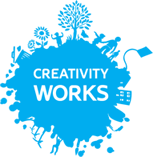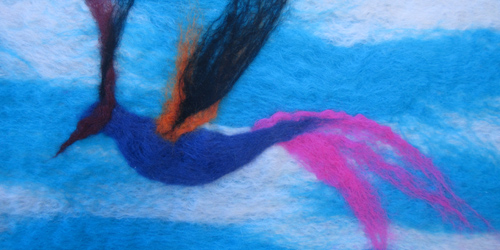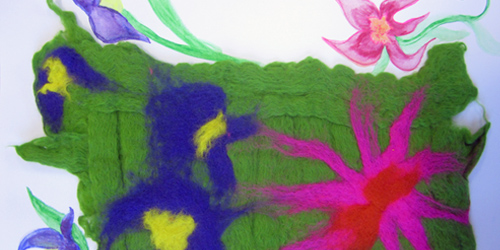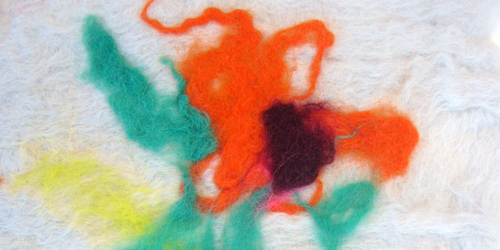Networks
Networks has been a Creativity Works project based in Bristol, which integrated professional artists within five different settings; Teign Ward (a women’s medium secure unit), HMP Eastwood Park (mother & baby unit), One25 (reaches out to women trapped in street sex work), Rethink (women affected by mental illness), and Bristol Drugs Project.
Artist-facilitators delivered two sets of parallel arts courses of eight weeks to over 50 women involved with the criminal justice system or facing mental health issues. Partnership with two of the city’s cultural organisations, Light Box and Arnolfini enabled supported visits to contemporary art exhibitions, signposting to wider creative opportunities and an opportunity to showcase the women’s work in a city centre gallery context.
A series of digital studios, developed through prototypes in response to the women’s needs, was central to each course, creating connections and communication between the women and the city’s culture through the women’s artworks. For more information about the Virtual Studios click here
The socially engaged artists’ facilitation and contemporary community arts practice provided creative projects and opportunities tailored around participants’ interests. The project supported participants to learn informally (non-accredited) with the support of health professionals in the context of small groups and peer support. Personalised learning was directed through participants developing their own project and interests. Where the participants identified a direction, the artist supported them to develop skills through introducing stimuli in the form of materials, new techniques and cultural references. This flexible approach to facilitating learning, responding to the participants’ starting-point, enabled the women to explore and become more aware of their capabilities at their own pace. The social context and the ‘making’ of the women alongside the artists and the health professionals created the safe environment for the women to increasingly take the initiative and have their achievements recognised.
The project improved the women’s wellbeing and sense of self, enhanced their skills and confidence through the creative process and increased their engagement through a developed sense of community.
“Its offered additional opportunities for our service users outside of their regular planned activities and structure. The value is having external facilitators, something that is owned by them and the facilitator, not owned by mental health services, the trust”. Teign Ward
It takes the “being done to”, “we are the professionals, you are the service user” away – which our women experience all so much so that everyone is all together”. One25
“It is such a good model, it’s so important to offer clients different ways for understanding themselves, finding an identity, find that sense of self which they lose through mental health and drugs.” Bristol Drugs Project
Project Outcomes for learners:
- The Networks course successfully motivated a difficult to reach client group who often lack confidence to attend regularly, despite obstacles such as chaotic lifestyles and mental health issues.
- Over 80% of the women chose to enrol on a second Networks course;
- Across both Networks courses, participants’ initial aspirations centred on improving their mental wellbeing;
- The Networks course met participants’ wellbeing aspirations and its main impact was enabling the women to feeling part of a community alongside increasing their broader skills;
- The Networks course raised the women’s aspirations to become engaged with other activities within the community.
“The work each woman did on the course has lifted spirits and allowed her to feel assertive and happy and comfortable with herself. Many talked about or referred to her history with more confidence at recognising how to handle difficult emotions by working and being involved in the group of like minded and supportive women.” Bristol Drugs Project
“The course has given the participants a real sense of validation and pride. There has been a palpable atmosphere of relaxed engagement and a belief that they can learn new skills and successfully achieve good results.” One25
Conclusion:
- There is a need to support women offenders, ex-offenders and service users who have mental health needs, or who are living chaotic lives and who are disadvantaged or marginalised in the community, more holistically;
- There is a need, to offer a range of services for those that need more individual support through increasing their confidence and self-esteem, prior to accessing mainstream education;
- In the context of the Criminal Justice System, HMP Eastwood Park Prison identified women prisoners who need extra support because of mental health issues. Probation services identified clients who would benefit from regular respite from their chaotic lives as a means to support their personal development;
- Networks evidenced that creative opportunities can meet this need through enabling participants to achieve an improved sense of wellbeing and personal development, but most importantly to increase their aspirations.
- The ‘gateway’ (or informal learning) approach is an effective way to engage individuals with both their potential and with activities in the community;
- Creative opportunities, when delivered by professional socially engaged artists, enable individuals to pursue their own interests, from whatever their starting point, and self-direct these in a safe, relaxed environment which supports a wide range of skills development.
- A professional socially engaged artist also brings specific skills by linking isolated individuals to community and culture. It is clear that the community arts approach, as distinct to arts therapy, has a crucial role to play in crossing the boundary between wellbeing and education;
- The group context and peer support shows that small groups are an effective means to support individuals in feeling part of a community, reducing isolation and increasing their engagement in broader community activities;
- It is evident that a partnership approach between artists and health professionals combines different approaches to individual and group development:
- Partnership working between and across agencies is essential for the integration of further opportunities for service users, which allows an emphasis on individual need;
- Without investment and resources, service partners have a limited capacity to exploring alternative and innovative approaches to supporting individual needs and developing relationships between services and community.
- Without investment and resources, service partners have a limited capacity to exploring alternative and innovative approaches to supporting individual needs and developing relationships between services and community.
Project Resources
Visit the Networks on-line studio and exhibition
Visit the Networks artist’s blog
Project in a Box for further detail about the project management
Evaluation of the impact of the Networks project:




